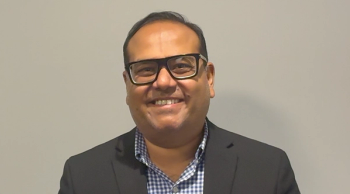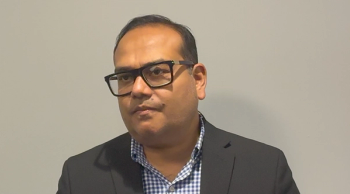
Oncology NEWS International
- Oncology NEWS International Vol 4 No 9
- Volume 4
- Issue 9
RODEO MRI Technique Under Study in Breast Cancer Patients
DALLAS--Magnetic resonance imaging (MRI) of the breast has recently generated much excitement as a means of improving the specificity of mam-mography and thus reducing the number of negative biopsies, Steven E. Harms, MD, of Baylor University Medical Center, said in an interview with Oncology News International.
DALLAS--Magnetic resonance imaging (MRI) of the breast has recentlygenerated much excitement as a means of improving the specificityof mam-mography and thus reducing the number of negative biopsies,Steven E. Harms, MD, of Baylor University Medical Center, saidin an interview with Oncology News International.
Dr. Harms, director of magnetic resonance imaging, and his colleagueat Baylor, Duane P. Flamig, PhD, director of magnetic resonanceresearch, have developed a technique known as RODEO that furtherenhances MRI sensitivity, particularly in women who have a compromisedmammogram.
The technique may prove especially useful in evaluating the breastfor additional cancer sites in patients with a suspected solitarylesion on mammography, to determine eligibility for breast conservation(see Rodeo image ).
"We felt that the currently available commercial MRI equipmentreally did not provide adequate resolution or give us the confidenceto call abnormal areas, so we developed a new technology basedon a pulse sequence," Dr. Harms said.
RODEO (rotating delivery of excitation off-resonance) uses a combinationof radiofrequency (RF) pulses, magnetic fields, computers, anda breast coil "antenna" placed over the breast, to imagebreast tumors as small as 3 mm. "Using RF pulses, we canexcite water and selectively suppress fat or silicone or bothsimultaneously," he said.
When the fat signal is eliminated from the MR image, contrast-enhancedtumors appear as bright spots surrounded by dark fat. This helpsphysicians determine whether the mass is a tumor, cyst, hemorrhage,fat necrosis, or scar tissue. With silicone suppression, the techniquecan distinguish tumor masses from silicone leaks.
Dr. Harms said that RODEO may play a major role in the stagingof breast cancer. He described a patient with a breast abnormalityon MRI that could not be visualized with magnification mammog-raphyor sonography. "At surgery, she had disease extending exactlyas shown on the MRI," he said.
With funding from the National Cancer Institute, Dr. Harms isevaluating the use of RODEO to diagnose breast cancer and to assesstumor response to non-surgical therapy.
The first arm of the study is looking at the ability of MRI todefine the extent of disease in women with suspected cancer bymammography or palpation who are eligible for breast conservation,and to detect breast cancer in women with dense breast tissue,silicone implants, or previous breast surgeries that may compromisethe use of mammography.
He noted that in postmenopausal women under the age of 70, therehas been a gradual decrease in tumor size at discovery due tothe use of screening mammography, but in premenopausal women withdenser breast tissue, tumor size at diagnosis has actually increased,due to the inability of mammography and palpation to find theselesions. With MRI, dense breast tissue may not be as limitinga factor as it is in mammographic studies.
RODEO Matches Pathology
In the second arm of the study, results with RODEO have been shownto correlate closely with pathology findings in women with locallyadvanced disease who have had induction chemotherapy prior tosurgery. "When tumor response is evaluated by examination,it is incorrect about 50% of the time, but MRI closely matchedpathology at P = .0001, a very tight correlation," Dr. Harmssaid.
The RF coil that is integral to the RODEO technique can be usedwith a stereotactic device to allow surgeons to perform preciseMRI-directed biopsies and reduce the number of positive marginsfound at surgery. Currently, positive tumor margins are reportedin 40% to 70% of first excisions. Dr. Harms believes that RODEOhas "tremendous potential" to reduce the number of reexcisionsby allowing more accurate placement of stereotactic wires andneedle insertions at biopsy.
The coil may be employed with the patient lying on an MRI table,using squeeze plates to compress the breast and hold it in position.Another approach under development is to replace the MRI tablewith a regular biopsy table, eliminating the need for breast compressionand allowing easier access to the entire breast.
Dr. Harms said that RODEO is just beginning to be expanded toadditional sites, such as the University of New Mexico, and itshould be more widely available in the near future.
As a word of caution, he noted that although MRI has a very highnegative predictive value, it probably cannot always distinguishbenign from malignant breast disease. "False negatives dooccur, and, at this time, biopsy should not be denied a patientbecause of a negative MRI," he said.
Articles in this issue
about 30 years ago
New Probe Detects Fusion of bcr/ablabout 30 years ago
Avon's Breast Cancer Crusade to Offer 'Pink Ribbon' Pensabout 30 years ago
Take a Behind the Scenes Look at ODACabout 30 years ago
Michigan Cancer System Named for Womanabout 30 years ago
High-Dose Chemo Patients to Get Stem Cells With the MDR-1 Geneabout 30 years ago
Report on Minority Health Finds Few Black Oncologistsabout 30 years ago
Where Are We Going and What Questions Do We Need to Ask?about 30 years ago
Phase I Trial of Circadian Patterned Infusion of Continuous IL-2 Opensabout 30 years ago
Hodgkin's Disease Patients Sought for Trial of MoAbNewsletter
Stay up to date on recent advances in the multidisciplinary approach to cancer.



















































































